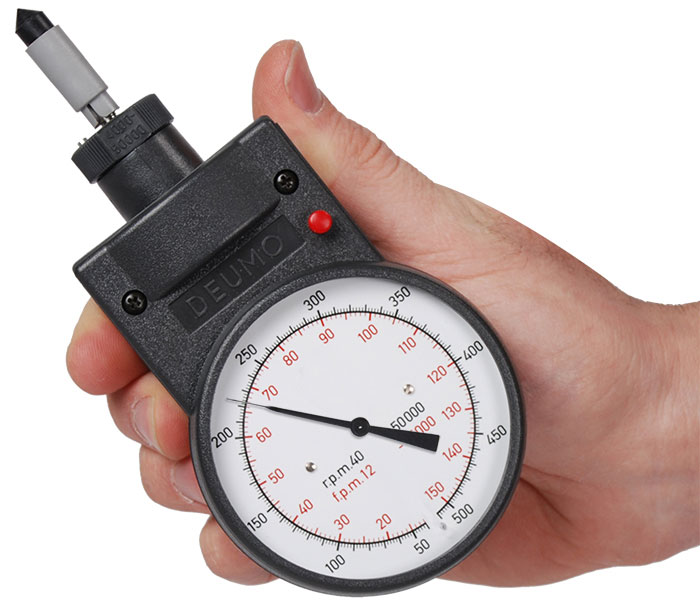Opening the Secrets of Tachometers: Whatever You Need to Know Regarding This Important Tool in Your Vehicle
Recognizing the intricacies of tachometers can give important insights into your vehicle's performance and maintenance demands. From gauging engine speed to figuring out the information it offers, tachometers offer as an essential tool for lorry proprietors and enthusiasts alike. By unraveling the mysteries behind this important instrument, you can unlock a riches of details that can boost your driving experience and make certain the long life of your car.
Significance of Tachometers
The value of tachometers lies in their capacity to give critical real-time information regarding an engine's rotational rate, allowing for exact surveillance and upkeep of machinery. By determining the changes per minute (RPM) of an engine's crankshaft, tachometers use valuable insights right into the engine's performance - tachometer. This information is necessary for making certain that the engine runs within its optimal variety, staying clear of prospective damage from over-revving or underperforming
Tachometers play a crucial duty in helping drivers and professionals spot any abnormalities in the engine's speed, which might show issues such as gas ineffectiveness, mechanical troubles, or too much strain on the engine. By quickly determining these issues via tachometer analyses, upkeep can be carried out proactively, preventing expensive repairs and downtime over time.
In addition, tachometers are especially important in high-performance vehicles and equipment, where accurate control over engine rate is needed for optimum operation. Racing cars and trucks, aircraft, and industrial equipment count on tachometers to provide peak performance while maintaining security requirements. Essentially, tachometers are not simply instruments for gauging rate however crucial devices for guaranteeing the smooth and efficient operation of engines throughout numerous applications.
Exactly How Tachometers Measure Engine Speed
Using sensing units that spot the regularity of electric pulses created by the engine's ignition system, tachometers accurately gauge the rotational speed of an engine. By keeping an eye on the price at which these pulses are received, tachometers offer real-time responses on how quickly the engine's crankshaft is revolving per minute, frequently described as revolutions per minute (RPM)
The tachometer's sensor, commonly connected to the engine's ignition coil or stimulate plug cords, picks up the electrical signals created each time a cylinder fires. These signals are then transformed into RPM analyses showed on the scale or instrument collection within the chauffeur's sight. Tachometers can be analog or digital, with modern-day cars generally featuring electronic screens for precise and immediate RPM analyses.
This info is critical for chauffeurs to recognize the engine's performance, stop over-revving, maximize gear moving, and pop over to this site ensure effective gas usage. By properly measuring engine speed, tachometers play an essential role in assisting vehicle drivers operate their cars securely and successfully.
Interpreting Tachometer Readings
Having a clear understanding of just how tachometers determine engine speed sets the foundation for properly interpreting the RPM readings displayed. Analyzing tachometer analyses is vital for optimal car efficiency and engine health. RPM (Transformations Per Minute) readings on the tachometer suggest the rate at which the engine's crankshaft is revolving. When the engine is idling, the tachometer needle typically rests around 600-1000 RPM, depending upon the automobile. As you speed up, the RPM will certainly raise, mirroring the engine's greater rotational rate. When shifting equipments in a hands-on transmission automobile, the RPM will certainly go down as you involve the clutch and modification equipments, after that increase once again as you speed up in the new gear. Keeping an eye on the tachometer can help you establish one of the most effective shifting indicate optimize gas economy and engine power. In addition, uncommon variations or continually high RPM analyses might suggest prospective issues with the engine that may call for specialist interest. By taking notice of the tachometer readings and understanding how to analyze them, you can guarantee your car operates efficiently and successfully.


Tips for Utilizing Tachometers Effectively
To improve driving efficiency and maximize engine performance, what trick techniques can be applied for efficiently making use of tachometers? Tachometers are vital tools that supply real-time feedback on engine rate, allowing drivers to make educated choices for better efficiency - tachometer. Below are some ideas for making use of tachometers efficiently:
Understanding Ideal RPM Variety: Acquaint on your own with the optimal RPM (Revolutions Per Minute) variety for your lorry. Maintaining the engine within this range can improve fuel effectiveness and lengthen the engine's life-span.
Changing Gears at the Right Time: Make use of the tachometer to identify the finest time to move gears. Objective to shift gears when the RPM reaches the optimal array for the following equipment.
Checking Engine Stress And Anxiety: High RPMs for long term durations can stress the engine. Keep an eye on the tachometer find to avoid over-revving, particularly throughout velocity or when lugging heavy tons.
Tachometers and Car Maintenance
When considering lorry upkeep, tachometers play a vital function in discover here keeping an eye on engine performance and spotting potential concerns. Tachometers supply necessary data on engine speed, permitting motorists and auto mechanics to ensure that the engine is running within the suggested RPM range. Routinely monitoring the tachometer analyses can help recognize issues such as engine misfires, worn-out ignition system, or problems with the fuel distribution system. By focusing on the tachometer, drivers can protect against extreme pressure on the engine, which can cause costly fixings down the line.
Along with spotting possible issues, tachometers can likewise assist in optimizing gas performance. By keeping the engine rate within the optimum range, motorists can boost their gas mileage and reduce fuel intake. This not just benefits the motorist's pocketbook but likewise contributes to ecological preservation by lowering damaging exhausts.
Conclusion
